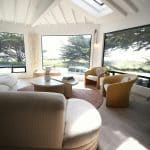The principles of Feng Shui, an ancient Chinese philosophy, have been used for centuries to create balance and harmony in spaces. Its principles are not just old wives’ tales. They are tried and tested methods that have been proven effective in creating positive energy flow in any space. The living room, as a crucial space in your home where you entertain guests and engage with your family, is an ideal room to benefit from the principles of Feng Shui. This article will provide you with essential tips to effectively incorporate Feng Shui elements into your living room design.
Understanding the Basics of Feng Shui
Before you can start applying Feng Shui principles to your living room, it’s important to understand its core fundamentals. The Chinese word ‘Feng’ translates as ‘Wind,’ and ‘Shui’ means ‘Water.’ These elements are associated with good health in Chinese culture, hence their prominence in this philosophy. Feng Shui is all about balancing energies, or Chi, to assure health and good fortune. It seeks to promote positive energy flow by considering the layout and design of your home.
Also to see : How Can You Design a Home Theater with Acoustic Panels for the Ultimate Movie Experience?
The philosophy emphasizes the five elements – fire, earth, metal, water, and wood. These elements should harmoniously interact with each other in your living room. For instance, the wood element, symbolizing growth and vitality, can be represented by wooden furniture or plants. The water element, symbolizing wealth and serenity, can be embodied by incorporating colors associated with water or actual water elements like a small indoor fountain.
The Importance of Furniture Placement in Feng Shui
Furniture placement is one of the most important aspects of Feng Shui as it greatly influences the flow of energy in your living room. The sofa, being a major piece of furniture, should be positioned correctly. It should ideally be placed against a solid wall, which provides support and protection. Avoid placing the sofa under a beam, as it is believed to carry a heavy energy that could cause health issues.
In parallel : How to Build a DIY Vertical Bike Storage System in a Garage?
The flow of Chi should not be blocked, so ensure that the furniture does not obstruct the entrance or windows. Also, avoid positioning furniture in a way that makes people face away from the door as this creates a subconscious feeling of insecurity. Instead, arrange your furniture in a conversational way, promoting interaction and a sense of community.
Choosing the Right Colors
In Feng Shui, different colors are associated with different aspects of life. Therefore, choosing the right colors for your living room is crucial in creating a balanced energy flow. Warm, earthy tones like beige, light yellow, and brown, create a nurturing and stabilizing energy, making them ideal for the living room.
Green represents the wood element in Feng Shui, symbolizing growth and vitality. Incorporating green can be done through adding plants or using green accents in your interior design.
Red is considered the most auspicious color in Feng Shui. It represents the fire element, symbolizing joy and excitement. You can add red to your living room in small accents, but avoid overusing it as it can overwhelm the energy of the room.
Adding Positive Energy Elements
Incorporating certain elements into your living room can enhance the positive energy flow. Items that represent the five elements of Feng Shui can add balance and harmony to your space. For example, a wooden coffee table or side tables can represent the wood element, while metal lamps or decorations can symbolize the metal element.
Also, adding mirrors can significantly enhance the Chi of the room. Mirrors reflect light and make the room appear larger, creating a sense of abundance. However, avoid placing a mirror directly opposite the front door as it is believed to reflect the energy back out.
Keeping Your Living Room Clutter-Free
Lastly, decluttering is an essential aspect of Feng Shui. A cluttered space blocks the flow of energy, leading to stagnation and negativity. Regularly declutter your living room, organizing items and removing any unnecessary things. This will create a more peaceful and harmonious environment, as well as make your room appear more spacious and welcoming.
Incorporating Feng Shui principles into your living room layout can create a more harmonious and positive environment. By understanding the principles and applying them to your furniture placement, color choice, and room elements, you can effectively utilize Feng Shui to enhance the energy flow in your living room. Remember, it’s not just about the physical adjustments, but also about creating a space that feels good to you and your family. So, feel free to adapt these guidelines to your personal tastes and needs.
Making Use of a Bagua Map
The Bagua map is a crucial tool in Feng Shui design. It’s a grid of nine squares that represents the different areas of your life. Each square corresponds to a particular life area such as career, health, or relationships. The Bagua map can be used to map the energy flow in your living room, allowing you to identify which areas need improvement.
To use the Bagua map, align the bottom of the map with the wall of the entrance door of your living room. Each square of the map then corresponds to a specific area of your room. The goal is to balance the energy in each of these areas by incorporating the appropriate Feng Shui elements and colors.
For instance, the southeast area of your living room corresponds to wealth and prosperity. According to Feng Shui principles, this area should be enhanced with items that represent the wood element, like plants or wooden furniture. Additionally, colors related to the wood element, such as green and brown, can be utilized in this area.
Understanding and applying the Bagua map can significantly improve the energy flow in your living room, thereby promoting a more balanced and harmonious living space.
Utilizing Natural Light and Commanding Position
Natural light is another essential aspect of Feng Shui. It is believed to significantly enhance the flow of positive energy. Therefore, it is recommended to allow as much natural light into your living room as possible. Use light, airy curtains that let in light while still providing privacy. If your living room does not get a lot of natural light, use mirrors or light-colored decor to help brighten the space.
The “commanding position” is another crucial principle in Feng Shui. This is the spot in a room that is furthest from the door, but from which you can still see the door. Ideally, the main piece of room furniture, such as your sofa or main chair, should be placed in the commanding position. This position offers a sense of security and control, thereby enhancing overall positivity in your living space.
Conclusion
Incorporating Feng Shui principles into your living room layout can significantly enhance the flow of positive energy, promoting a more harmonious and balanced living space. From understanding the basics of Feng Shui, to furniture placement, color selection, adding positive energy elements, decluttering, using the Bagua map, and leveraging natural light and the commanding position – each aspect plays a vital role in optimizing your living room Feng Shui.
Remember, Feng Shui is not about adhering to strict rules but about creating a living space that feels good to you and your family. It’s about creating a balance between the physical and energetical aspects of your space. So, feel free to adapt these Feng Shui tips to suit your personal tastes and needs. After all, the ultimate goal of Feng Shui is to enhance the quality of your life by creating a living space that nurtures and supports you.











